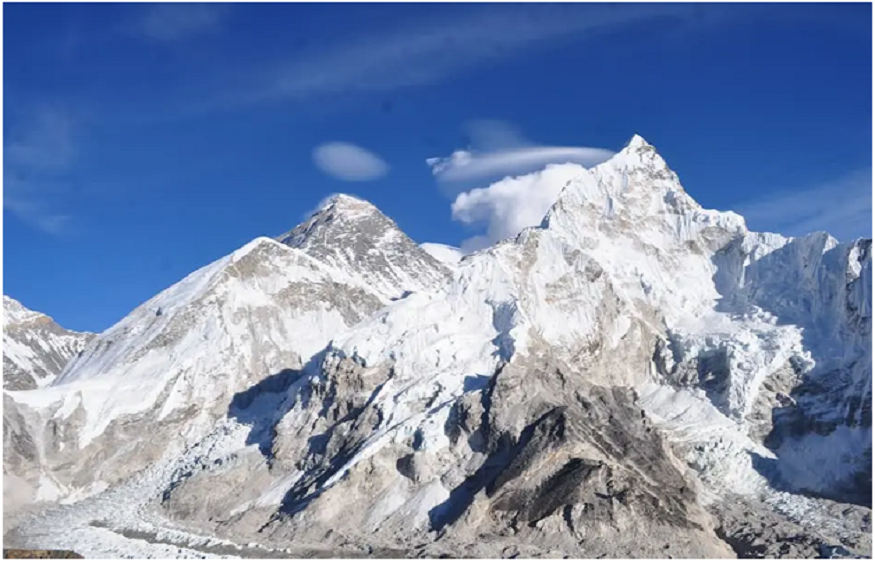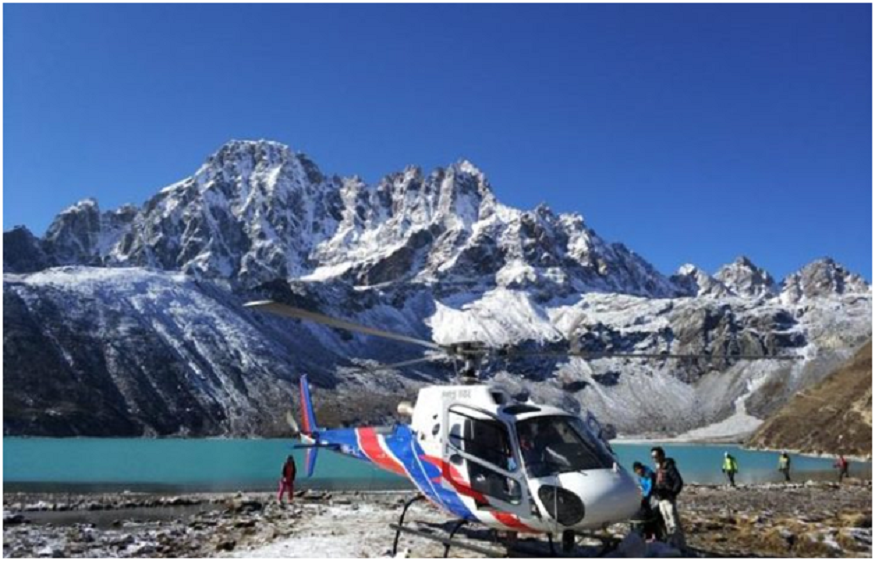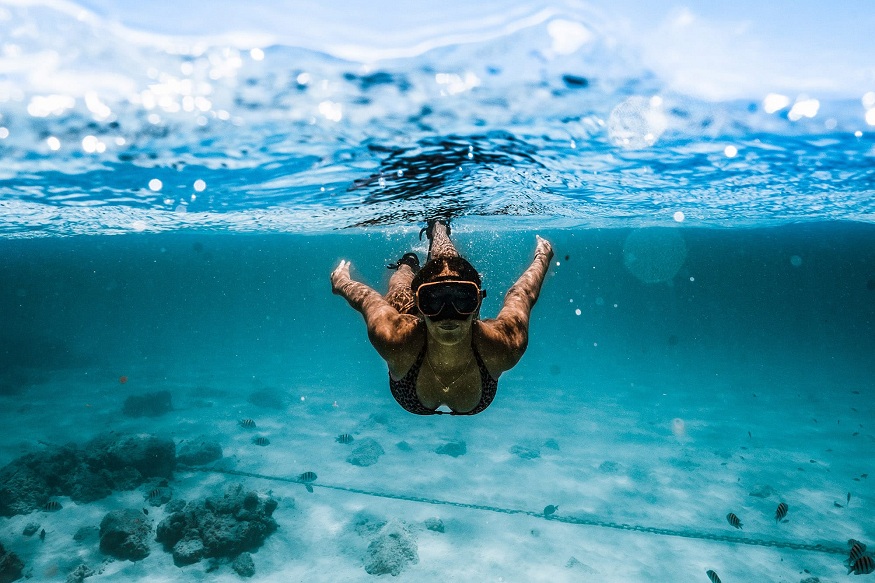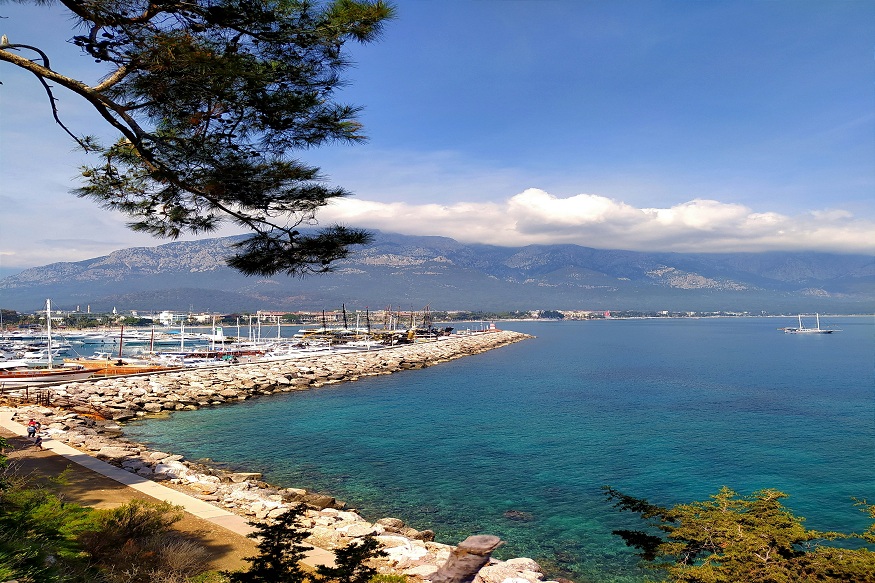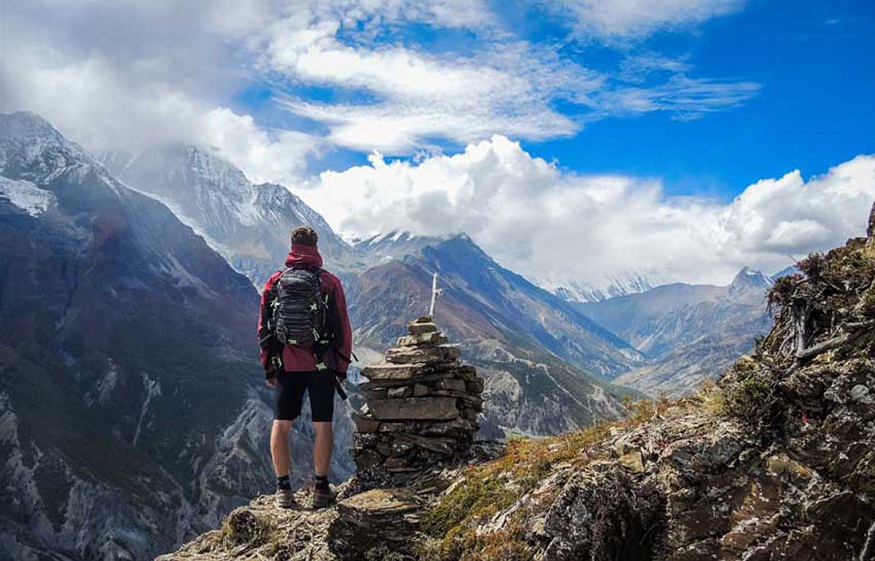
Whether it’s your first time to Everest, or you are an experienced climber, choosing the right Everest base camp trekking package is fundamental when trying to stay safe and organised. Thus, by choosing a good Sherpa Expedition tour, you will benefit a lot from this adventure, lovely meals, enthusiastic professionals, and contact with the local culture.
This package is a maximum of one time. Stability is the most important thing to consider when choosing the trek package. Sherpa guides are critical for managing altitude acclimatization, ensuring safety, and providing insight into local culture. The top Sherpa Expedition company will be able to provide you with guides who have been in the business for many years and know the Everest area inside out. Trekking in Nepal is a physically challenging endeavor, however, the guides are trained to face the physical strain of the trek and are trained to recognize the symptoms of altitude sickness.
Mount Everest Base Camp Trek ITINERARY AND ACCLIMATIZATION Another would! Proper acclimatization days incorporated into a well-designed itinerary are essential to reduce any risk of developing altitude sickness. If you go with a reputable Sherpa Expedition, they will provide you with a well-paced itinerary that gives you enough time to acclimatize to high altitudes in the days, weeks, and months leading up to your trek so you can enjoy the trek and get to Base Camp without the risk of injury. Expect tours to provide gradual elevation gains, rest days, and tips from guides about how to manage altitude challenges.
Please also be mindful of the level of accommodation and meals. The majority of the trekking packages offer overnight stays at teahouses en route. Ensure that the package includes clean and comfortable teahouse accommodations with good meals, particularly as you ascend to higher altitudes and those offerings become more scarce. Sherpa Expedition companies will often work closely with the best local teahouses so that you are comfortable and safe.
Finally, look at the provided level of support. Relying on a reputable Sherpa Expedition package means they will organize all logistics for you (all permits, transportation, and lodgings). Additionally, they will provide extra assistance, including insurance coverage, equipment hire, and emergency evacuation plans, to guarantee that every detail of the trek is managed efficiently and your peace of mind is guaranteed during the trek.
Everest Base Camp Trek Packages: An Introduction
The Everest Base Camp is known as one of the world’s greatest treks, loved by wonderful hikers around the world. To make the process as smooth and memorable as possible, there are numerous trekking packages available through trekking agencies like Sherpa Expedition and Trekking, which cater to all preferences, budget plans, and fitness levels. These packages typically cover everything listed above — permits, lodging and food, guiding services, and transportation — making life easier for trekkers who can then concentrate on adventure rather than logistics. Trek packages vary widely, from low-cost options with basic lodging and services to plush experiences with comfy lodges, better food, and extra support. On the other end of the scale, some packages offer fixed itineraries, whilst others can be tailored to suit the needs of individuals. Both standard and luxury Everest Base Camp trek packages cater to trekkers to have a safe, memorable, and successful trip to Everest Base Camp, a dream for most outdoor lovers. The right trek package, however, ensures trekkers can appreciate natural beauty, engage with Sherpa culture, and be prepared for challenges that accompany high-altitude trekking.
Nature of Trekking Packages, Trekking Packages
Read on for everything you need to know about the types of trekking Everest Base Camp packages available, as well as their pros and cons, so you can figure out which one suits you best! The simple package offers a guide, porters, and teahouse accommodation, providing a good value option for those seeking a more traditional and local trekking experience. When it comes to these packages, they focus on a stripped-down, functional trek, nothing extra. At the other end of the scale, luxury or premium trekking packages include top-end accommodations, like boutique lodges or even deluxe hotels in larger towns, private rooms, gourmet food, and extra perks like Wi-Fi and hot showers. Everest Base Camp Luxury Hiking Packages are for trekkers who want to experience the rugged beauty of the Everest region while having a more comfortable and luxurious travel experience. On the other hand, there are tailor-made packages for trekkers to create their itinerary; decide the start date of trekking, tools, accommodation, and other activities. For instance, some trekkers choose a package offering side trips to places like Gokyo Lakes or helicopter rides back from Everest Base Camp. No matter which type of package you choose, make sure to select one that best fits your goals, fitness level, and what you would feel comfortable and adventurous doing.
What to Look for in a Sherpa Expedition Tour
Himalayan Base Camp Trek These days it is becoming easier than ever to book a trek through a company, such as Sherpa Expedition and Trekking, but there are a few main features to look for that will greatly enhance your overall experience trip trekking to Everest Base Camp as there will defiantly be some companies that stand out from the rest. Most importantly, you need experienced guides, support staff. Sherpa guides possess intricate local knowledge and expertise, enabling trekkers to traverse the difficult landscape safely and effectively while mitigating the dangers of altitude sickness. There’s also the point of inclusiveness of the package—be sure that all logistics required for the trip, like permits, transportation, and accommodation, are included. The best tours will also provide quality meals, either in teahouses or in special dining setups, to maintain energy levels for the trek. Safety must be prioritized, too, with acclimatization days built into the itinerary, plans in place for emergency evacuation, and an emphasis on altitude sickness prevention. Moreover, a proper itinerary with plenty of time for rest and acclimatization will lead to a more enjoyable and successful trek. Some of that support comes in the form of cargo, like supplies for trekking, like the essential packing, as well as porters who carry out the trek. The reputation of the tour operator matters too — check for reviews, testimonials, and certifications to see if they have proven experience in providing great trekking adventures. With these key features, trekkers can have a safe, enjoyable, and memorable Everest Base Camp adventure.
Itinerary Options: Flexibility
We are comparing itineraries for the Everest Base Camps with the flexibility option when deciding on the right package. A multitude of trekking companies, like Sherpa Expedition and Trekking, have several different itineraries available with various routes, lengths, difficulties, and paces. Typical trekking itineraries last about 12–14 days, including rest and acclimatization time, but some trekkers want more time, while others may be only able to afford less, and it is quite possible to combine the two. Other wider-angle packages also include extra days for side trips for neighbouring hills, like the Gokyo Lakes or the Helicopter return from Everest Base Camp, whereas others may be all about the EBC trek. It is also important to maintain some flexibility in the itinerary, particularly in the event of changes in weather or health issues, which may take precedence over other plans. A quality trekking company will offer some customization, allowing trekkers to make their journey fit their own needs. Also, be sure to look over the trek’s pacing. Some itineraries include longer trekking days for more seasoned trekkers, while others offer slower, more gradual ascents for those new to trekking or anyone wishing to minimize altitude sickness. The best way to select a trek that meets your Everest Base Camp aspirations is to understand the itinerary and its flexibility.
Conclusion – The Contributions of Mature Guides and Reliable Assistants
Expertise of guides and support teams is one most important factors for a good Everest Base Camp trek. Sherpa guides, being locals to the area, have unparalleled experience in navigating the harsh high-alpine terrain. They know the trail like the back of their hand, including its potential hazards, and they have some invaluable insights into the local culture, geography, and history of the Everest region. Mountain guides are responsible for keeping an eye out for signs of altitude sickness in trekkers, advising them on pacing and modifying the trek accordingly for the health and comfort of the group. Aside from the main guides, support staff like porters, cooks, and drivers play an essential part in keeping the trek running smoothly. Porters transport heavy weights, easing the trekking burden for adventurers and enabling trekkers to travel much more freely. Cooks prepare healthy meals to keep trekkers up to energy while the team takes care of logistics like accommodation and travel arrangements. A well-informed and supportive crew of guides and staff not only improves the safety of the trek but also makes the whole experience more enjoyable and less stressful. Ensuring a successful and unforgettable trek to Everest Base Camp for trekkers taking on such a physically demanding journey takes the support of trained professionals.
Specialized Package Equipping to ensure Safety and Management of Altitude
Thus, safety management and altitude handling are critical whilst hiking to base camp on Everest. Any properly structured trekking package will necessarily emphasize these elements, without which trekkers cannot handle the rigorous conditions in high-altitude settings. Choose a package that offers experienced Sherpa guides who recognize the symptoms of altitude sickness and have first-aid training. They can advise you on how to properly acclimatize, incorporating rest days into the trek, for example, and steering you toward small climbs to reduce your risk of falling sick.
Everest Base Camp Trek Cost Also, make sure the package covers oxygen support or emergency evacuation plans if the sickness gets worse. There are also packages with even more medicinal supplies (for altitude sickness, etc.). The best trekking package will ensure following the best practices for slow acclimatization by staying at certain points a couple of extra days in order for the trekkers to get acclimatized to the thin air before going to head further.
In addition, inquire about the medical care provided. Well-known trekking companies typically work with local medical facilities or offer mobile clinics for trekkers. This ensures assistance is available during crises. In Conclusion, a comprehensive trekking package that employs sound safety measures and altitude management techniques is the key to a safe and enjoyable Everest Base Camp trek.
Inclusions & Exclusions: What to Expect in Your Package
When choosing an Trek to Base Camp Mount Everest package, it is crucial to thoroughly go through the inclusions and exclusions, so you can be assured of what is included in your package. Most packages generally include guides and porters, accommodation, meals, and permit fees. These are vital parts of the trekking experience, and they facilitate your traveling as hassle-free as possible. The guide’s knowledge of route, culture, and altitude is invaluable, while porters can help with the heavier loads, allowing you to concentrate on the trek itself.
Accommodation at the teahouses along the route is often included, and meals are generally provided in the teahouses. Also, access permits in Nepal (Trekking Information Management System (TIMS) card and Sagarmatha National Park entry permit, respectively) are usually organized and included in the price of the package.
But there might be some exceptions you need to know about. By way of example, the base price may not cover international flights to Nepal, travel insurance, personal equipment (clothing, sleeping bags, trekking gear, etc.), as well as optional activities, including extra sightseeing. Other expenses, like tips for guides and porters, medical expenses, and emergency evacuation costs, usually aren’t covered, so be sure to include those in your budget. Knowing about this will help you in making your trekking plans without getting surprised or disappointed.
Value for Money: Budgeting and Other Considerations
Budgeting is a key factor to consider when planning an Everest Base Camp trek so that you get the best bang for your buck. TREK COST Voyager for trek costs vary widely depending on trekking package, standard of services, and company. Typically, budget packages may include the basics, while premium packages may come with additional perks, such as better accommodations, fancier meals, or more seasoned staff of guides.
Although the low-priced alternative can sometimes be tempting, it is essential to check that your trekking package is covered with things such as experienced Sherpa guides to emergency evacuation to regarding safety and assistance as requested. These are not areas to be frugal that could compromise your safety and the quality of your experience. Moreover, high-end packages may provide you with luxurious accommodations or bonus perks, but be certain these add value to your trek and are not just unneeded additions.
Also, budget for tips for your guides and porters, tips, personal expenses (snacks, drinks, or souvenirs), and travel insurance, which may not be included in the package. Several trekking companies provide packages with numerous possibilities, where you will be able to select what fits you best. The best trekking packages in Nepal are value for money, ensuring high-quality and safe services, making the experience memorable without making a hole in your pocket.
Past Trekkers Reviews and Testimonials
Asking for reviews and testimonials from trekkers who have completed their journey with the company is one of the best ways to assess the quality of a package for an Everest Base Camp trek. These can provide insight into the company’s reliability, the quality of guides, the comfort of accommodations, and the overall experience. People who are trekkers give honest feedback on what they like and what needs improvement, along with batch reviews about value for money.
Everest Base Camp Trek Find reviews that include specifics about the trek, including professionalism of the guides, how well the company managed logistics, and effectiveness of altitude pacing strategies. The positivity surrounds the team of Sherpas that the company works with, the smoothness of the trek, and the authenticity of the cultural experience. Criticism could include communication problems, hidden fees, stiff itinerary.
In addition, some companies share photos or videos from previous trekkers, allowing a better sense of what to expect. Travel forums such as TripAdvisor or targeted trekking communities may offer honest reviews and on-the-ground accounts, too. You can also make a better choice by reading about past trekkers’ experiences and choosing a package that suits your expectations and adventure goals.
Last Tips to Choose the Best Trek Package
An important part of having a successful and enjoyable trekking experience is choosing the right Everest Base Camp trek package. Research and compare different trekking companies and what previous trekkers have said, and start with the best. Consider companies with local knowledge of Everest trekking tours and that have experience in the challenges and nuances of the region.
Look for a good itinerary with enough acclimatization days to avoid altitude sickness. A trustworthy company must have experienced Sherpa guides trained in first aid and altitude management to accompany you for your safety during the trek. Also, confirm that the company offers insurance and has an emergency evacuation plan in the event of any health issues.
Carefully assess what is included in the plan and what is not included. You can check here if there will be any hidden costs and what services you will be provided with, e.g., meals, accommodation, transportation, etc. It’s also a good idea to check if the company supplies quality gear, such as trekking poles, sleeping bags, and jackets, or if you need to procure them yourself.
Lastly, keep an eye on the budget and total value of the package. Although it can be tempting to go for the cheapest option, it is very important to keep your safety and comfort above costs. Choose a package that offers the best balance between cost and quality so that you can focus on having an unforgettable and rewarding trip to Everest Base Camp.
What to pack for the trek to Everest Base Camp?
Packing for the Everest Base Camp Treks can be a daunting task, especially since you’ll be lugging everything you’ll need for the trip on your own back. As always with treks like this, the secret is to stick to items that will make sure you are comfortable and safe while also keeping the load light. Dress appropriately in moisture-wicking base layers, a windproof jacket, and thermal layers for warmth. A top-quality sleeping bag that can handle cold weather is essential, as temperatures can plummet overnight. You’ll also want a good pair of trekking boots for comfort and support, and trekking poles to help with stability on uneven terrain.
For accessories, bring a headlamp, a hat and gloves, and a buff or scarf to shield your face from freezing winds. Bring wet wipes, toothpaste, and toothbrushes for personal hygiene, as well as any medications you may need. Sunscreen will also be essential, as well as lip balm, to prevent the skin from burning while exposed to the sun in higher altitudes.
Do not forget to bring important documents such as your passport, permits, and travel insurance phone, as well as a camera or smartphone to take photos of the beautiful landscapes. Lastly, bring along a water bottle and water purifier, as clean drinking water may not be readily available along the trail.
The trick is avoiding overpacking so that you can spend your time enjoying the trek and acclimatizing to the rigors of the high-altitude setting.
How do you plan the Everest Base Camp trek?
There is a lot of planning you need to do for the Everest Base Camp trek, such as Physical training, logistics, and much more. Trekking Duration is the first thing you need to plan. Spring (March to May) and autumn (September to November) are the peak trekking seasons, offering the best possible weather for a successful hike. Don’t attempt to trek during the monsoon season (June to August) or the winter (December to February) when conditions can be perilous.
After that, plan your itinerary. As for Mount Everest Base Camp Trek, however, most trekking takes about 12-14 days, depending on pace, though you should always build in adequate rest and acclimatization days, particularly at high altitude. A trusted trekking agency will help you with a balanced schedule to prevent altitude sickness.
Training and physical preparation an essential components for such a trek. Train for several months ahead of time with cardio and legs in particular! To prepare for the terrain, practice hiking with a backpack and trekking poles. On top of that, prepare the required stuff, like clothes and boots for cold weather.
Besides that, make sure you obtain the necessary permits for the trek, like the TIMS card and Sagarmatha National Park permit. First things first: Do your flights to Kathmandu and internal flights to Lukla. Finally, make sure you have travel insurance that also covers high-altitude trekking, and be familiar with emergency evacuation procedures if you do fall ill.
What is the best bag for the Everest Base Camp trek?
It is crucial to choose the right bag for the Everest Base Camp trek, as it is going to carry all of your gear along on the journey. The ideal bag should be comfortable, durable, and able to carry your needs without overcrowding your shoulder. You should use a 50-60 liter trekking backpack for the trek. This size provides sufficient room to pack clothing, equipment, and other personal belongings without becoming unwieldy.
Selecting a bag with a great suspension system is essential, that is, one with padded shoulder straps and a hip belt that helps spread the weight evenly throughout your body. This is super important for long trekking days with a full load. Also, ensure the bag is water-resistant or includes a rain cover, since weather in the Everest region can turn on a dime.
Also, the bag should have multiple compartments to organize your items with ease. A lower compartment is perfect for keeping things you may use throughout the day — snacks, a camera, a water bottle. A front pocket for first aid supplies and important paperwork will be handy too.
Size and comfort are paramount when choosing a bag. A pack that carries well and distributes weight well can make a world of difference in how much strain you feel in your body, especially when you start to get up to higher altitudes. If you’re unsure, though, it’s a good idea to go to a trekking shop where the experts can help you find a suitable bag for your body size and requirements.
How fit do you need to be to trek to Everest Base Camp?
The Everest Base Camp trek is physically challenging, and although you don’t need technical climbing skills to complete it, you do need a basic level of fitness. You should, however, be reasonably fit and ensure that you will spend long walking days on rough terrain in a responsible manner. The route to Base Camp is approximately 130 kilometers (80 miles) long, and it is a test of constant endurance.
You don’t need to be an elite athlete, but you’ll want to work on your cardiovascular endurance, since you’ll be hiking for several hours each day at levels that can vary quite a bit in elevation. 3 to 6 months before your trek, start training — cardio like running, cycling, and hiking with a backpack loaded with weight that you’ll be carrying. Your legs, core, and upper body growth will be a boon as well to help cope with steep ascents and descents.
Lastly, the trail itself will be just rocky terrain that gets sloped and rugged, so adapting to walking on this type of trail will help you prep for those trail trials. This trek is not about speed; it is about pacing and resting regularly, especially at higher altitudes where the body requires time to readjust. Since the trek can be physically and mentally demanding, especially in the top stages, you must train for mental toughness, too.
If you’re physically active in general and you can hike all day and gain some elevation, you’ll be fit enough for the Everest Base Camp trek. With these tips, by being prepared and going in with the right mindset, you will enjoy the trek and make it to base camp!
How much money is needed for the Everest Base Camp trek?
Therefore, the trek to Everest Base Camp may cost very differently, depending on whether you are on a package or the type of package, your personal choices, or the duration of your visit. A standard Everest Base Camp trek usually runs between $1000-1500 USD for a 14-day trek with a budget company. The price typically covers guide fees, porter services, permits, accommodation, and food on the hike. On the other hand, if you choose a luxury trek package, the costs can soar even higher, between $2,500 to USD 4,000, as luxury packages bring better facilities, food, and good services.
Besides the trek package, there are other costs to consider. International flight tickets to Nepal usually cost between $500 to USD 1500, depending on your departure territory and travel dates. Domestic flights to Lukla from Kathmandu normally range between $150 to USD 250 one way. You will also need to factor in personal gear like clothes, trekking equipment, and so on — another $200 to USD 500 or so.
Also, travel insurance, critical for a trek like this, should not be overlooked. Depending on the coverage, insurance prices may range from 100-200 USD. Finally, you’ll need to factor in tips for guides and porters, which are usually not covered in the price of the package. Bill tipping can be anywhere from $100 to $200, depending on the level of service.
In total, the cost of an Everest Base Camp trek may be somewhere in the range of $2,000 to $4,500 US dollars (or more) in total, depending on the package and other expenses. Plan for every aspect so that you know in advance whether you will have enough money to complete the hike.

